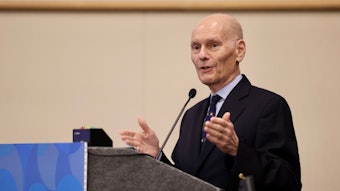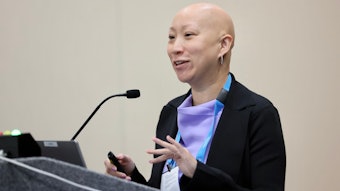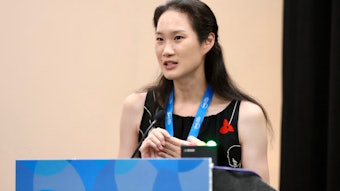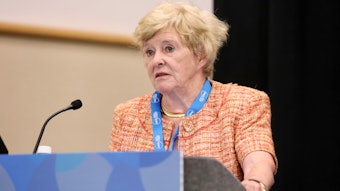On the rare side of skin cancer
A look at rising cases of rare non-melanoma.

P013 – Rare Non-Melanoma Skin Cancers: Diagnosis, Management, and Treatment
When it comes to skin cancer, there’s the top three: basal cell carcinoma, squamous cell carcinoma, and melanoma. Lurking in the shadows is a less familiar, but equally important category — rare non-melanoma skin cancer. During the Aug. 11 Innovation Academy session, “P013 – Rare Non-Melanoma Skin Cancers: Diagnosis, Management, and Treatment,” the discussion turned to rare non-melanoma, including its diagnosis, documentation, treatment, and management.
In general, people are more likely to develop skin cancer based on their age and health of their immune system, said session director M. Laurin Council, MD, MBA, FAAD, professor of dermatology at the Washington University School of Medicine in St. Louis, Missouri. These key factors, she said, play a large role in the recent increase of instances of rare non-melanoma skin cancer
“First, these lesions are more common in older adults and [the U.S.] population is aging,” Dr. Council said. “Second, we have a growing population of immunocompromised persons due to organ transplantation or iatrogenic reasons.”
Previously, she said, the low incidence of these rare skin cancers meant dermatologists didn’t have a comprehensive understanding of their make-up and behavior. The silver lining to this influx is that it presents an opportunity to build upon the existing knowledge base, which will hopefully lead to more advancements in standardized treatment protocols and improved management strategies and outcomes.
“As we gain greater understanding of these lesions, we are able to create guidelines for the multidisciplinary management of these skin cancers,” said Dr. Council. “There are emerging systemic therapies for advanced disease, such as immunotherapy. These are giving patients with metastatic and inoperable disease greater quality of life.”
Dr. Council and her colleagues presented on a portfolio of conditions that falls into this growing category of cancers. Murad Alam, MD, FAAD, covered mucinous carcinoma and microcystic adnexal carcinoma, while Charlene Lam, MD, MPH, FAAD, reviewed extramammary Paget’s disease. Similarly, Song Park, MD, FAAD, looked at Merkel cell carcinoma and panelist Allison Therese Vidimos, MD, RPh, FAAD, discussed squamoid eccrine ductal carcinoma and dermatofibrosarcoma protuberans. Dr. Council explored sebaceous carcinoma.
“Sebaceous carcinoma is divided into periocular and extraocular subtypes, and the management and prognosis of each differs slightly,” Dr. Council said. “Additionally, a portion of patients with sebaceous carcinoma also have Muir-Torre syndrome, which predisposes them to other cancers such as colon cancer. It is important that we identify and screen those at risk.”
Dr. Alam is generating guidelines that will provide consensus for how to approach these tumors. So far, he has developed standards for sebaceous carcinoma, microcystic adnexal carcinoma, and extramammary Paget’s disease.
Following their individual presentations, the speakers held a tumor board, in which attendees introduced and received input on patient cases. Dr. Council said she hopes that an in-depth look at this unique subset of cancer allows dermatologists to expand their knowledge and offerings, as well as to work more across specialties.
“It’s important that we continue to collaborate with others for treatment of these rare non-melanoma skin cancers so that we can continue to offer patients the best care,” she said.











